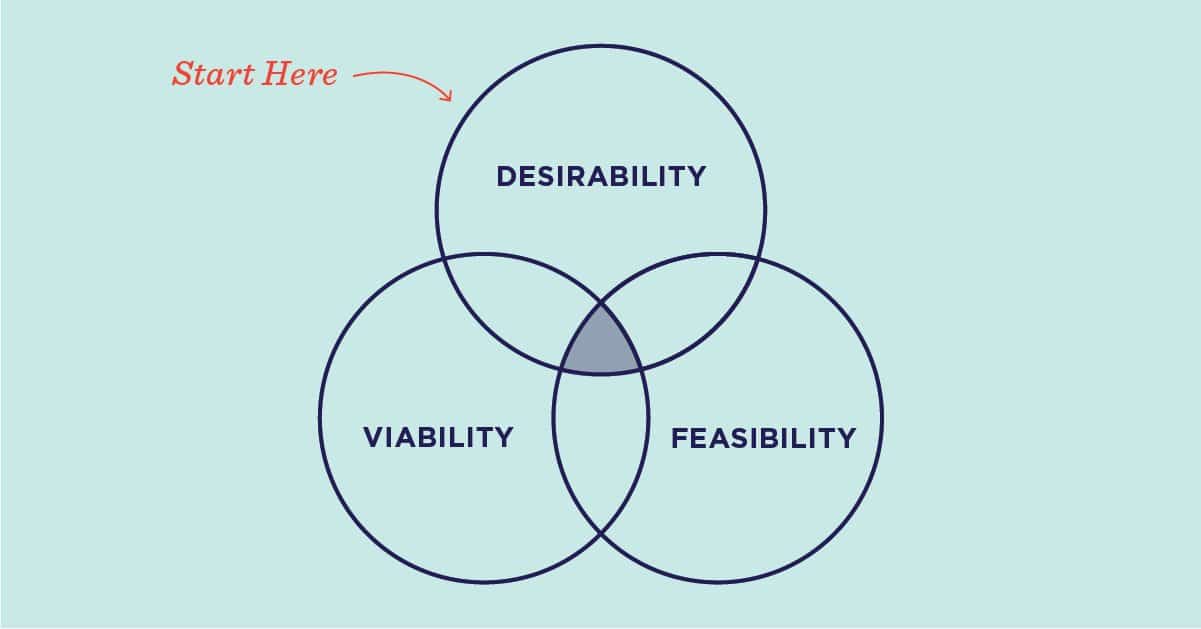Design Thinking fosters innovation by encouraging organizations to focus on the people they’re creating for, which leads to better products, services, and internal processes. For many, the concept of Design Thinking makes sense in the context of designing great user experiences or prototyping and testing new products and features. However, many companies, like Ford and Nike have expanded the use of Design Thinking to solve a wide range of challenges that go well beyond the classic definition.
If your organization struggles with developing unique innovative solutions to rapid societal changes, issues related to corporate culture, or problems affecting diverse groups of people and you have tried traditional problem-solving methods with little success then give Design Thinking a try.

Thinking Differently
Originally coined by John E. Arnold in 1959, Design Thinking was adapted for business purposes by David M. Kelly, the founder of IDEO, in 1991. Unlike traditional approaches to problem-solving that address viability and feasibility (i.e., what are the business benefits and can I implement the solution in a timely manner), Design Thinking introduces the characteristic of desirability. It’s a human-centric approach to problem-solving focused on inspiration, divergent and convergent thinking, prototyping, and frequent user testing.
Empathy not Sympathy
For some organizations, Design Thinking can represent a completely new way of thinking. It means having genuine empathy for the user or person. Empathy means that you feel what a person is feeling. Sympathy means you can understand what the person is feeling. Empathy is not just an important ingredient in Design Thinking—it’s the secret sauce. Without it, the entire method falls apart. Why? Because empathy allows you to put yourself in others’ shoes and see the problem from their perspective. It challenges long-standing assumptions and may lead to new and diverse ways of thinking.
Getting Started
Design Thinking can unlock new ways of framing problems resulting in innovative solutions. Although, it may feel messy at times and uncomfortable. If you are open to using this approach to solve some of your challenges, you can significantly increase the odds of success by recruiting the right team. There are a few important characteristics that your team members need to possess for Design Thinking to be effective: a collaborative spirit, a curious nature, and most importantly, empathy for the people who experience the problem. It’s essential to involve a diverse group from every part of your organization because everyone has a unique context and perspective, which can illuminate issues and ideas that would otherwise go unnoticed. There may be additional benefits as well, such as forging cross-organizational relationships and fostering a sense of ownership that will build unity throughout the organization.
A Practical Example
Design Thinking works best by approaching challenges in ways that best suit human needs regardless of the scale or authority of the challenge. In other words, where we need to make human sense of things. The foundational components of a company (finance and legal, planning and leadership, sales and marketing, operations and people) often go through changes resulting from growth, external systemic impacts, technological advances, and more. One timely example of widespread change most organizations are grappling with is the new normal resulting from the pandemic. Design Thinking can be leveraged to provide solutions to problems such as the following:
In the Harvard Business Review article, How to Do Hybrid Right, author Lynda Gratton states that when designing flexible work arrangements, focus on the individual human concerns, not just institutional ones.
No Limits
With a diverse, cross-functional team assembled, an empathetic perspective, and a clearly defined challenge, there are no limits to the ways you can unlock innovation at your company or organization. Design Thinking can help you build great products and services, yes. But the true benefits of Design Thinking will breakthrough once you start leveraging it for bigger problems. Data reveals organizations that use design thinking practices regularly see 56 percent higher returns and significantly higher revenues than those that do not. It’s a bold strategy, but once it takes hold, your organization will have gained a huge advantage.
Want to learn more about Design Thinking and how it can transform your organization? Contact us!
We have helped organizations big and small utilize Design Thinking to deliver unique customer experiences and true product differentiation.



